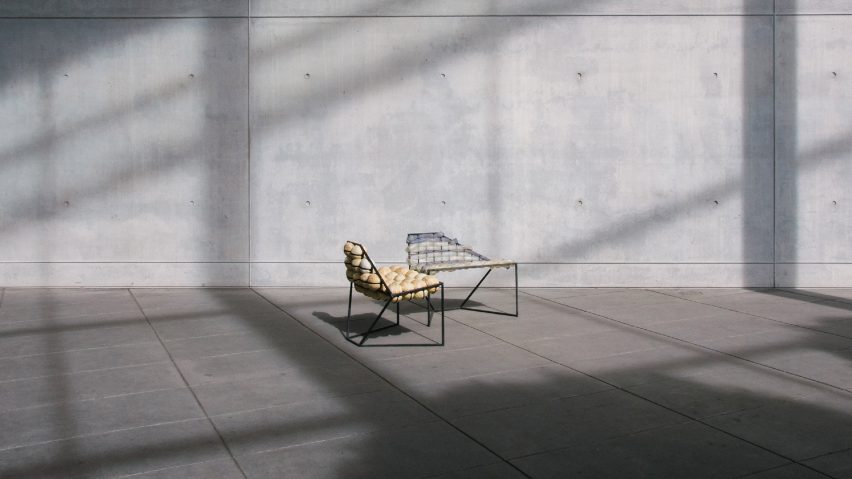
Tobias Trübenbacher creates furniture from pig bladders and cow intestines
Industrial design student Tobias Trübenbacher has used pig bladders and cow intestines to create furniture, in a bid to discover the "inner values" of animal offal.
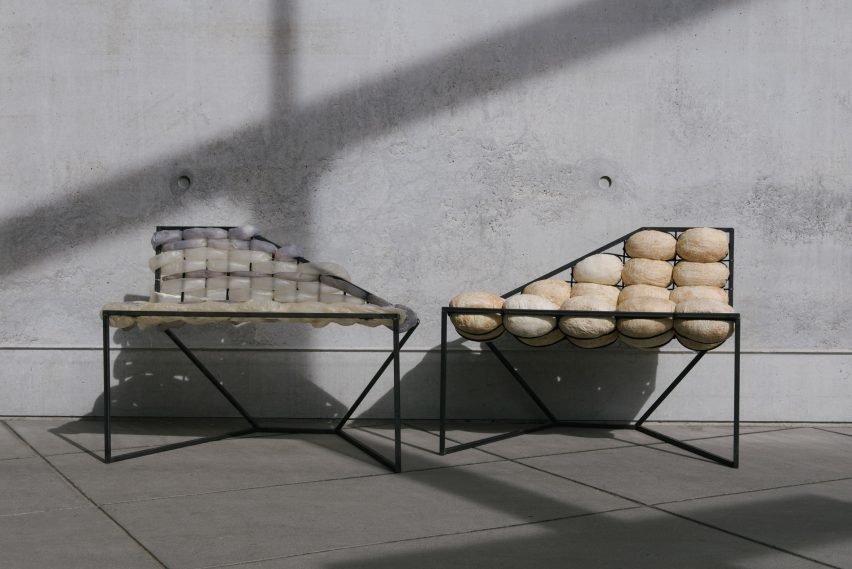
Trübenbacher began his Inner Values project after discovering less than half of an animal is processed and sold, while the rest is thrown away.
In creating his chairs, the student at the University of Applied Sciences in Munich wanted to utilise the by-products of animals that would normally be treated as waste, with the aim of putting every single part of the animal to use.

"Inner Values arose out of the fact that the prices for animal products are increasingly declining due to livestock farming and highly industrial slaughter methods," said Trübenbacher.
"While just some decades ago farm animals where highly valued and mostly all of their resources were further processed, today only the most tasty and easiest-to-prepare parts are actually used."
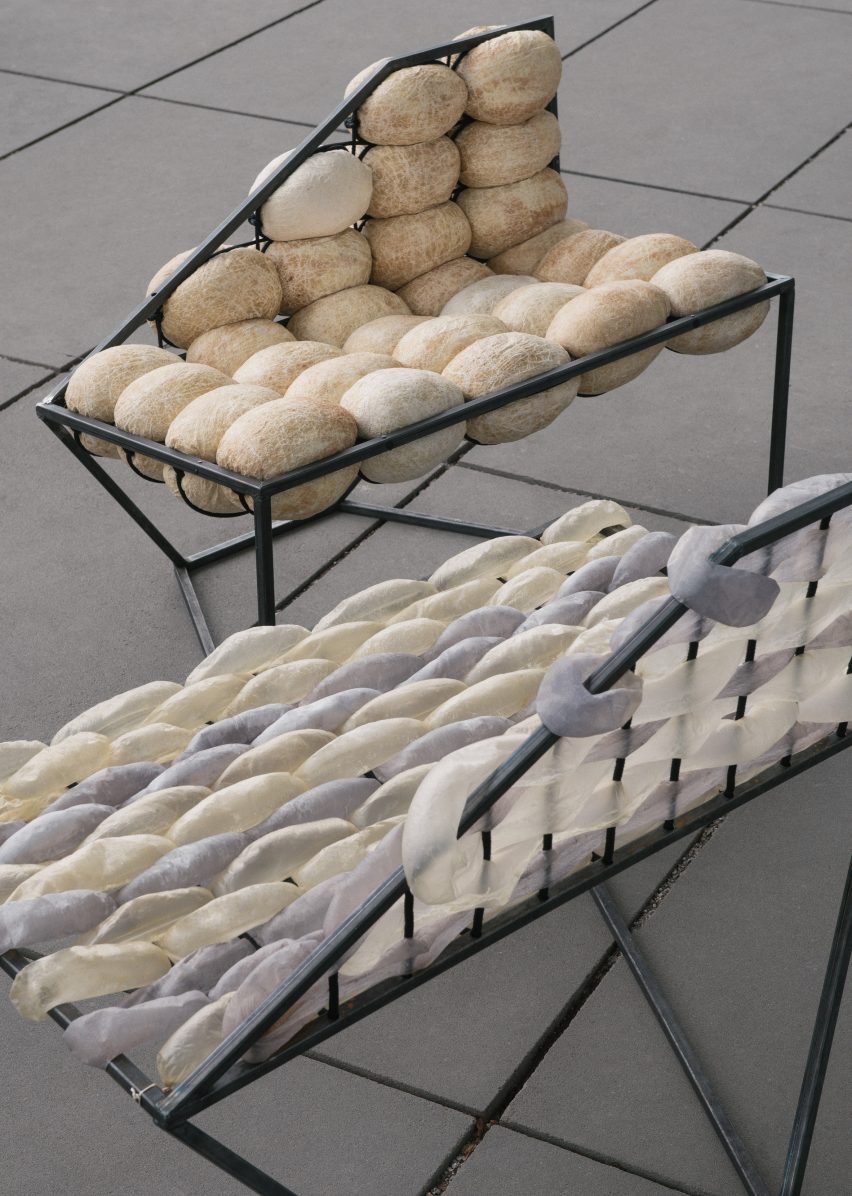
"In present times less than half of an animal is really further processed in Germany. All the rest goes to 'animal rendering plants' and thus more or less directly to the garbage can," he added.
After considering these issues of animal resource wastage, the designer started questioning whether these slaughter by-products are really nothing more than waste.
"Is our rejective attitude towards these materials justified and legitimate?" he asked. "Shouldn’t we, if we really need to kill an animal, at least appreciate all of its resources instead?"
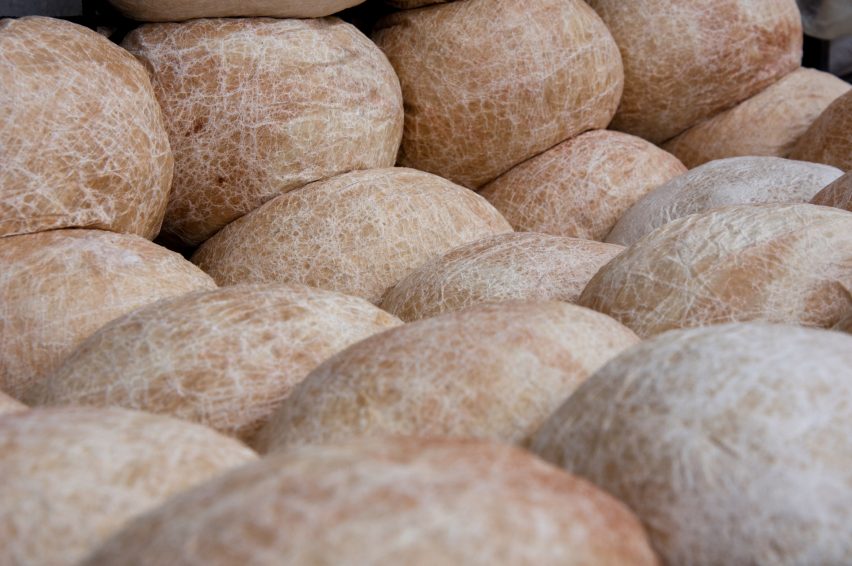
"Since we never get in contact with the slaughter process of our food, we have started to become disgusted with the 'by-products' of animals," he continued.
"Offals are more and more considered as repellent and inferior in our society. Basically, animals are degraded to cheap filet-resources – being killed for nothing more than some cutlets and schnitzels."
The designer created his animal-organ chairs in a bid to overcome the stereotypical materials used in furniture production, and to test whether consumers can appreciate supposedly "repellent" materials.
"Inner Values intends to aestheticise and re-evaluate supposed waste products in order to awake esteem for these high-grade animal materials, and to uncover their true value," he said.
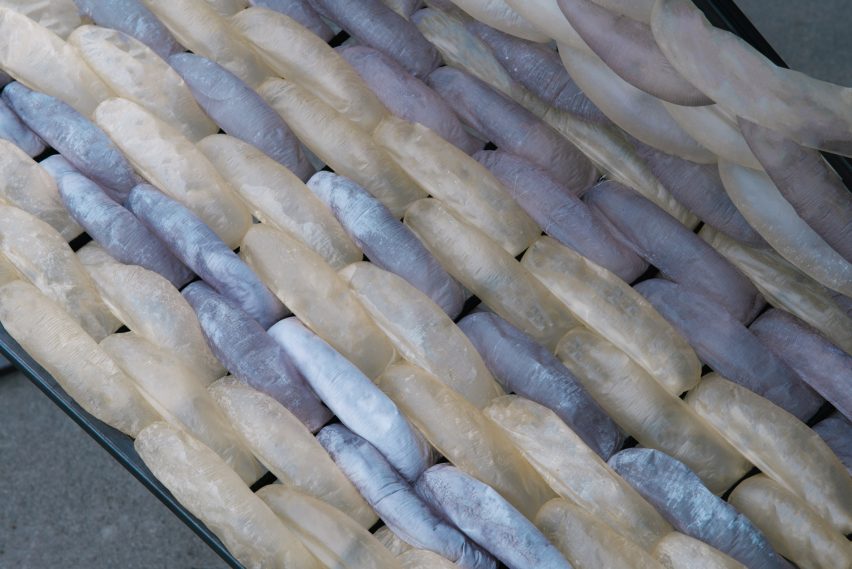
Trübenbacher began by experimenting with various materials to understand the characteristics and qualities of different animal skins, and trying out different methods of preservation.
The materials were dried, stretched, interwoven, prepared with glue and resin, or blown up. The designer also experimented with both traditional and new methods of tanning.
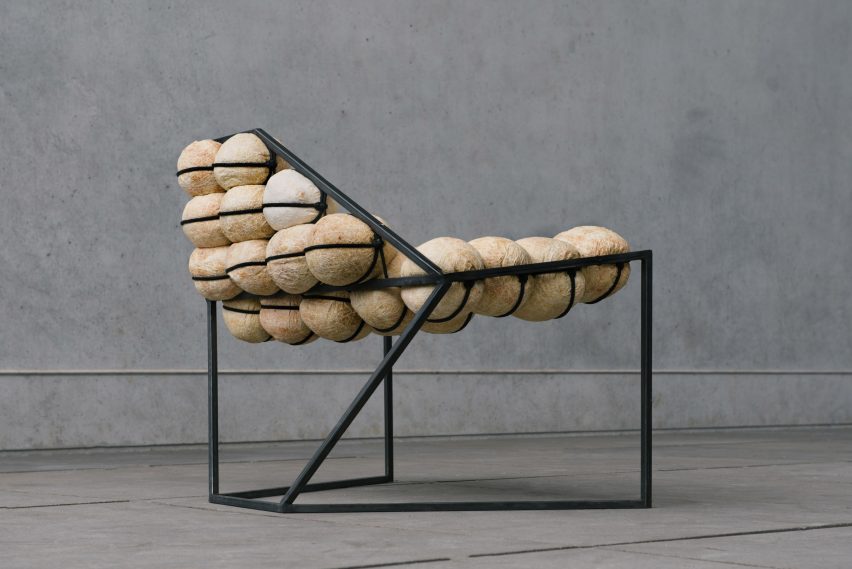
Based on the findings from these experiments, Tobias decided to use tanned pig bladders and cattle intestines for his chair designs.
The designer thoroughly cleaned the innards with vinegar solution to remove fat or meat remnants, before being washed in clear water, and tanned for several weeks in potassium aluminium sulphate or chromium sulphate. During this process the protein fibres in the skins, which mainly consist of proteins, contract, solidify and merge together.
Trübenbacher then "regresses" the skins by repeatedly massaging a mixture of train oil, Vaseline, curd soap and tallow in the tanned material while it's still wet.
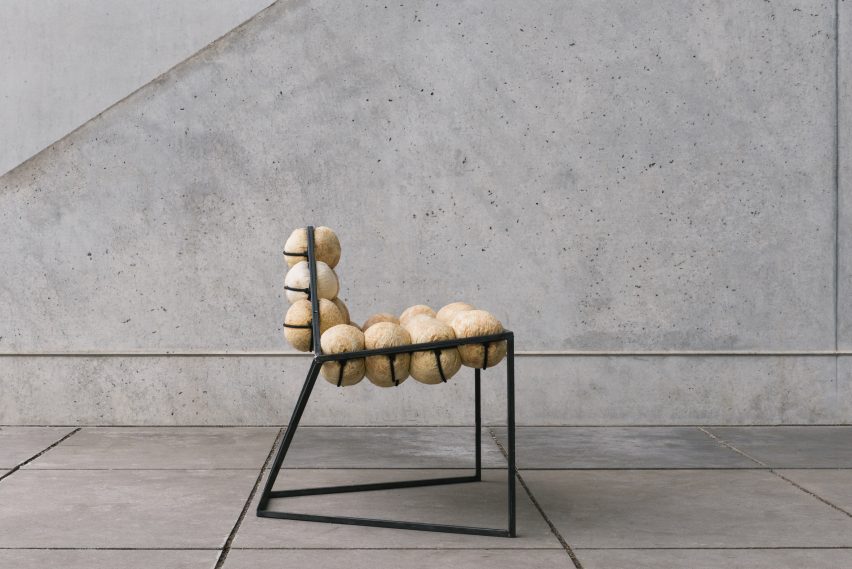
After this, the bladders and intestines are kneaded, stretched and tumbled for several hours. This encourages an "almost magical transformation" to take place, whereby the "stiff, brittle and wrinkled" skins become "whiter, softer, more flexible and leathery."
According to the designer, this tanning process causes both benches to become water-resistant, durable and robust.
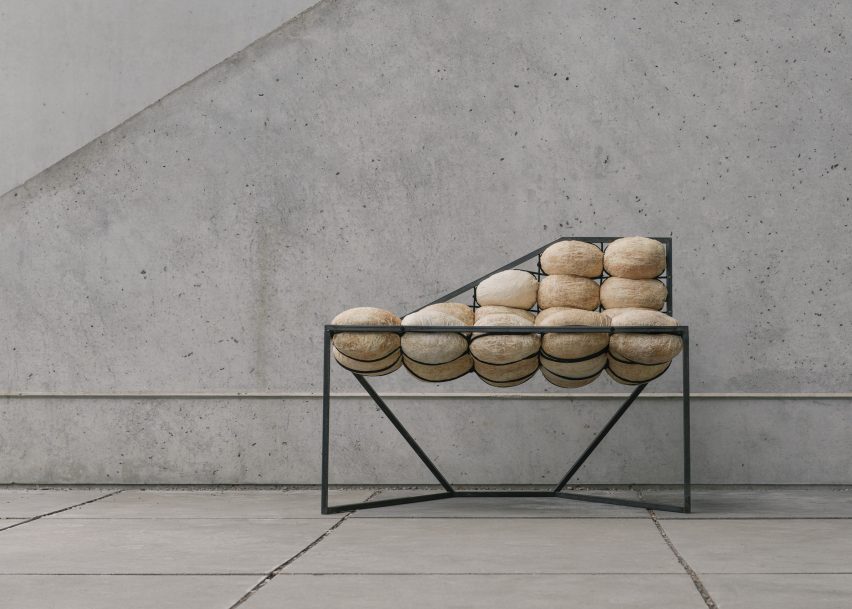
The bladder-leather is then stuffed with recycled bandaging materials, sewn shut and fixed on the seat frame, while the intestine-leather is blown up into fully inflated tubes and twisted around the seat frame and fixed.
"I decided to design bench seats since this kind of furniture has quite intimate aspects, as one must permit immediate contact between body and object," Trübenbacher told Dezeen.
"Thereby the former repulsive, negatively-connoted appeal of the supposed waste products is being replaced by opposite values. The materials are advancing to become something beautiful, inviting and supple, which people like to explore and be close to," he added.
Also shocked by the amount of waste in the meat industry, Design Academy Eindhoven graduate Billie van Katwijk developed a process for turning bovine guts into a sustainable leather alternative that can be used to make bags and accessories.